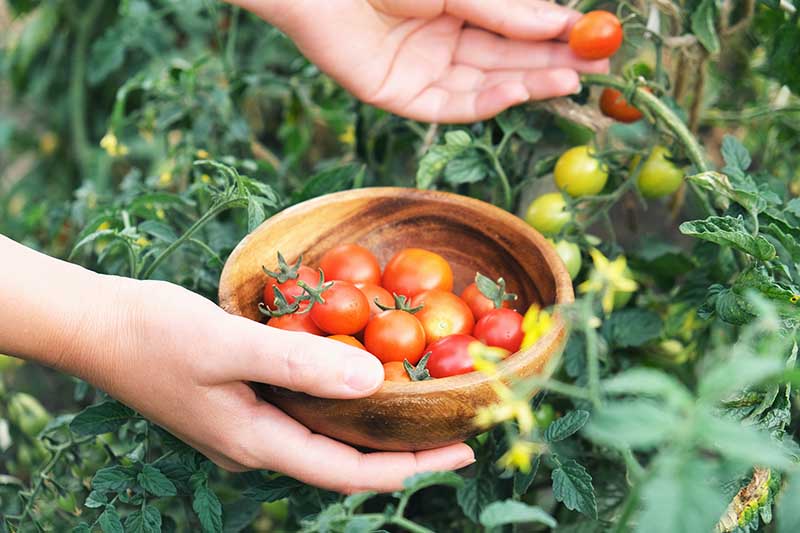How to Make Soil More Alkaline: 5 Expert Tips
-
Pete Ortiz
- Last updated:

Every gardener has their own tricks and secrets for creating an incredible garden filled with thriving plants. While maintaining a healthy garden is not challenging for a true garden enthusiast, certain plants require special treatment. Certain plants thrive in alkaline soil, and for that reason, it is necessary to provide them with ideal growing conditions.
If you want to learn how to take care of your alkaline-loving plants, read the advice we have gathered below. You will find some of the most efficient ways to make your soil more alkaline.
The 5 Tips on How to Make Soil More Alkaline
1. Garden Lime
Garden lime is an agricultural lime, one of the most common and effective ways of raising the pH levels of the soil. It is made of calcium carbonate, and it comes in a powdered form. Lime is an excellent source of calcium for your garden’s soil, although too much garden lime can hurt your plants. Too much lime in the soil can result in the plants absorbing magnesium and iron poorly from the soil.
Garden lime can also be dangerous to work with if it’s powdered because of the risk of breathing in the fine particles. This soil additive is also available in granular form, which makes it much easier and safer to apply.
Instructions:
It is best to add garden lime into the soil during fall because this soil additive needs several months to break down and have its full effect. You can additionally mix the garden lime into the few inches of topsoil thoroughly and wait for it to be absorbed by the time spring arrives.
2. Wood Ash

Debris from burnt wood can work as an excellent soil additive. Wood ash has a fantastic effect on the soil’s pH levels because it has high levels of calcium carbonate. Wood ash can act much quicker than garden lime making your soil more alkaline, but it only lasts for a short time. When using wood ash on your soil, it is crucial to avoid any treated wood that has been painted or stained in the past. Avoiding these types of wood and charcoal ash from grills will help you avoid contaminating your soil with any chemicals.
Instructions:
Knowing just how much wood ash to use on your soil to achieve the perfect pH levels is not a precise measurement. Comparing this amount to garden lime is best because you need around four times as much wood ash as you’d need garden lime to raise the pH level. Wood ash can also have an excellent effect when placed in the compost heap.
3. Baking Soda
Baking soda is an excellent solution for your garden soil because it is incredibly gentle on the soil and plants and won’t harm them. This cost-effective method is easy and quick, bringing extraordinary results to your garden. While baking soda doesn’t last as long as lime, it works quickly and can show the first results in a matter of days. As with any other addition to soil, you must be careful when using baking soda because too much can cause an imbalance.
Instructions:
The best and safest solution for your soil’s pH level is to mix one tablespoon of baking soda with one gallon of water. Make sure to stir well to have an evenly distributed solution, and pour it on your soil. You can repeat this process every few months.
4. Dolomite

Dolomite lime is almost identical to garden lime regarding its calcium carbonate levels. It is also commonly used in gardening to raise the soil’s pH levels. Dolomite lime has higher magnesium levels than garden lime, so you must be extra careful when creating an ideal solution. Before adding any dolomite to your soil, it is recommended to test its magnesium levels. Certain plants, such as tomatoes, enjoy an alkaline soil, and extra calcium can prevent some severe diseases.
Instructions:
Using dolomite lime on your garden soil should be done similarly to garden lime. Pour the exact quantity you require on the ground in the fall and leave it for several months.
5. Hydrated Lime
Quicklime is a limestone product that is derived through calcination. It has high levels of calcium and magnesium and comes in three different forms: dolomitic quicklime, calcium quicklime, and magnesian quicklime. When quicklime is mixed with water, it produces a dry powder known as hydrated lime, which is commonly used for gardening purposes. Hydrated lime has an excellent effect on the garden because it works fast and effectively—faster than regular lime.
Instructions:
When handling hydrated lime, it is crucial to take all safety precautions. Since it can be dangerous to inhale, gloves and a mask are a must. It is best to follow the exact instructions of the package when creating the mixture for your soil. Be careful to use hydrated lime only after planting seeds or during the growing season, as it can burn plant roots.
How to Maintain Alkaline Soil
If you are looking to avoid using soil amendments and lime, try to learn ways of maintaining ideal soil pH levels. The best way to maintain alkaline soil is to avoid using any acidic compounds. Ammonium nitrate and sulfate are the two most common fertilizers that will lower your soil’s pH, making it acidic. Another excellent additive to use is natural compost. It usually has a close-to-neutral pH level, which could help lower your soil’s acidity.
 Conclusion
Conclusion
Maintaining alkaline soil can be a hassle when you don’t have the right means. After reading this article carefully, you’ll learn the best tricks for making your soil more alkaline. You will hopefully see your crops thriving after following our tips, especially tomato plants, which enjoy growing in alkaline soil.
Featured Image Credit: Jumpstory
Contents


